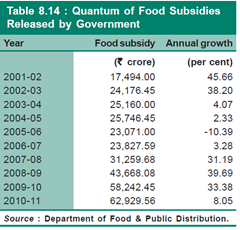The Right to Fair Compensation and Transparency in Land Acquisition, Rehabilitation and Resettlement Bill, 2013 (formerly known as the Land Acquisition, Rehabilitation and Resettlement Bill, 2011), has quite understandably, created a stir. Ever since the bill was passed in the Lok Sabha last week, the debate has largely centred around the negative impact on India Inc but it is too early to call it as a victory for landowners. On Thursday, the Parliament passed the amended version of the Bill wherein the proposed law would not apply to irrigation projects where environmental impact assessment is required under the provision of any other law already in place. The government also agreed that farmers whose land was acquired for irrigation projects will either get compensation or be given resettlement package.

One of the key proposals of the Bill is the rehabilitation and resettlement (R&R) of not just landowners but also project-affected people.
People whose land and habitation have been taken over without their consent by the state government or companies have resorted to protests, as a result of which all development projects are viewed with suspicion. The examples of acquisition of Singur land in West Bengal by the Tatas or the Reliance SEZ in Maharashtra are stark examples of this growing discontent.
Let’s quickly scan through key proposals before assessing its impact on stakeholders-
- Private companies to provide for rehabilitation and resettlement if land acquired through private negotiations is more than 50 acres in urban areas and 100 acres in rural areas.
- When land is acquired for use by private companies or public private partnerships (PPP), consent of 80% and 70% of landowners is required
- Compensation up to four times the market value in rural areas and twice in urban areas
- Companies can lease the land instead of purchasing it, but the decision is that of the state rather than the land-owner.
- If the land is sold to a third party, 40% of the profits will have to be shared with the original owners.
- Affected “families” would include farm laborers, tenants and workers who have occupied the area for up to three years before the land acquisition. Such persons will have to given a job or compensation of Rs 5 lakh, an allowance of Rs 3,000 a month for a year.

Infrastructure companies are crying hoarse that higher compensation could delay projects, spike property, infra costs and in some cases also make land acquisition for industrial projects nonviable.
They further argue that buying land for large projects like integrated townships will become difficult and contend that bigger government role in the whole process is a throwback to the Licence Raj era.
A quick look at some of the big-ticket projects will throw some insights into land acquisition costs as a component of overall project costs.
The mega Delhi Mumbai Industrial Corridor is a $90 billion project. The mega infrastructure project between the Japanese and Indian government has set aside Rs 1,200 crore for land acquisition under Phase-1 of the project cycle. Of course, going ahead, the costs would multiply several times. But what is the big fuss about this? Once the project is up and running, the operators would recover the money, much higher than their investments, from their customers.

Similar is the case with Posco’s much-hyped $12 billion steel plant in Orissa. The project, that has run into trouble with locals over alleged forceful eviction against project opponents, initially required over 4,000 acres of land near Paradip in Orissa but was later scaled back to 2,700 acres. According to latest reports and data available in public domain, the state claims to have acquired about 2,700 acres of land and paid compensation to 1,132 people. So far, ‘Rs 21 crore has been paid to the affected farmers for demolishing their betel vines ’. No compensation has been paid towards land as these vines and tree were planted by the villagers on the government land. In Posco’s case, land acquisition costs and Rehabilitation and Resettlement expenses are nil or very minuscule as entire land is government owned.
However, it sounds childish and laughable on the part of India Inc, setting up projects worth thousands of crores, to keep fuming at compensation costs and arguing that land acquisition costs alone would make projects nonviable. What should really worry corporate India is the lengthy process in securing possession of the land. The Bill calls for appointing several committees of activists and “experts” as part of social impact assessment. This would be followed by the Rehabilitation and Resettlement Committee. The multiplicity of agencies would only lead to bureaucratic red-tape and delay the whole process.

As for landowners, their rights have largely been protected. Only when 70% of project-affected land owners give their consent, can companies go ahead with the acquisition process. Since land prices shoot up substantially when industrial projects come up in an area, it is only fair that landowners are paid more than the ‘market price’. Due to lack of clarity on land holdings and titles, involvement of the state government would facilitate the transfer.
The bill will eliminate the trust deficit between land owners and corporate India and ensure that the benefits of development on the acquired lands accrue to land owners and others dependent on the land. Instead of bemoaning the provisions of the bill, India Inc should welcome the legislation as it eliminates uncertainties and lays out clear guidelines for land acquisition without which setting up projects was next to impossible.
Related articles





















![clip_image002[10]](http://stockviz.biz/wp-content/uploads/2012/10/clip_image00210_thumb1.jpg)
![clip_image001[5]](http://stockviz.biz/wp-content/uploads/2012/10/clip_image0015_thumb1.png)





